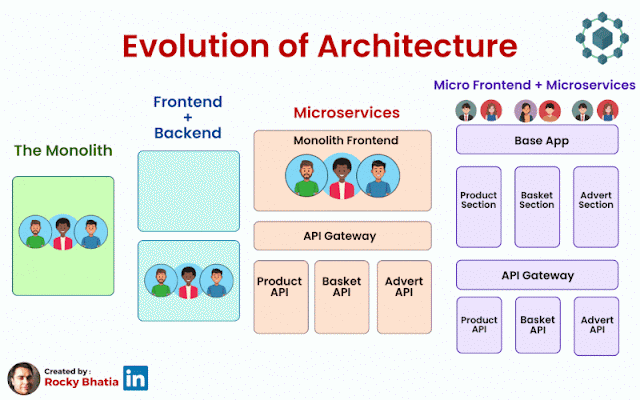Referred Link - https://www.linkedin.com/posts/aaj5_softwarearchitecture-techhistory-programmingevolution-activity-7216282493052698624-nokG
The field of software architecture has evolved significantly over time, driven by increasing software complexity, new technologies, and the need for efficient and reliable systems. This timeline highlights the evolution from early structured approaches to cloud-native and AI-driven designs. Each period builds upon the previous, addressing the changing needs of software development and deployment in an increasingly complex and connected world.
Let’s embark on a fascinating journey through time to uncover the secrets behind the evolution of software architecture! 🚀
1940s - 1950s: The Foundations
🔸 Early Computing Systems: Programming directly on hardware with machine code. Architecture was limited to hardware design.
1960s: Structured Programming Emerges
🔸 Introduction of subroutines and loops for more complex and manageable code structures.
1970s: Modular Design
🔸 Software is designed with the idea of modularization, leading to better separation of concerns and reusability.
1980s: Rise of Object-Oriented Programming
🔸 Emphasis on objects containing data and methods. Key languages include C++ and Smalltalk.
1990s: Component-Based and Distributed Architecture
🔸 Component-Based Architecture: Gains popularity, focusing on reusability and encapsulation.
🔸 Distributed Systems: The internet revolution leads to architectures that support multiple networked components.
2000s: Service-Oriented Architecture and Agile Movement
🔸 Service-Oriented Architecture (SOA): Focus on creating interoperable services.
🔸 Agile Manifesto: Published in 2001, influencing software development practices.
🔸 Microservices: Concept begins to emerge.
2010s: Microservices and Cloud-Native Design
🔸 Microservices Architecture: Gains traction, offering an alternative to monolithic designs.
🔸 Cloud-Native Architectures: Technologies like Docker (2013) and Kubernetes (2014) become central.
2010s - 2020s: DevOps and Continuous Delivery
🔸 DevOps Practices: Promote collaboration between development and operations teams.
🔸 Serverless Computing: Functions as a Service (FaaS) offerings expand.
2020s: AI-Driven and Serverless Architectures
🔸 AI and Machine Learning: Integrated into architectural designs.
🔸 Serverless Architectures: Emphasize cost efficiency and developer productivity.
Tags:
SoftwareArchitecture TechHistory ProgrammingEvolution CloudComputing DevOps Microservices AI MachineLearning SoftwareDevelopment TechnologyTrends Agile Innovation TechInsights DigitalTransformation ITArchitecture

No comments:
Post a Comment